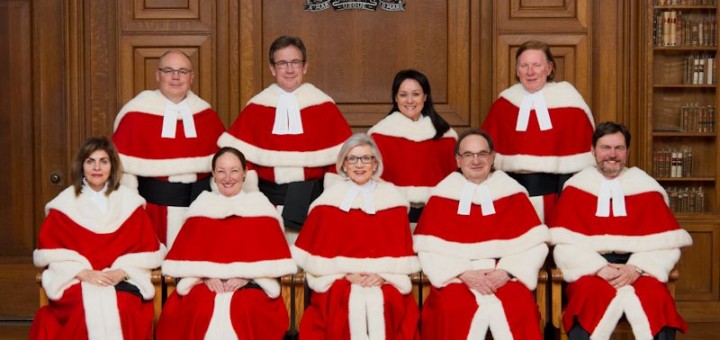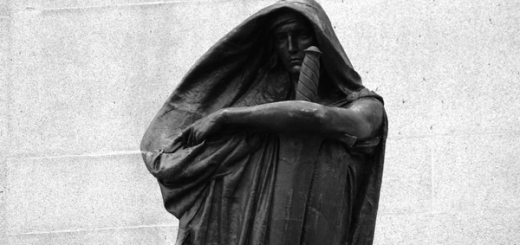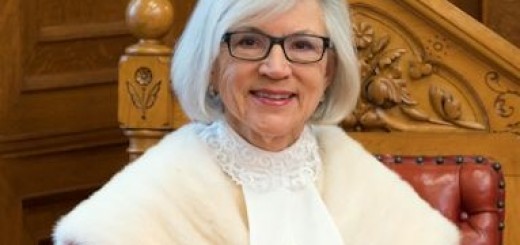Selecting the New Chief Justice

On December 15th, 2017, the Chief Justice of the Supreme Court, the Right Honourable Beverley McLachlin, will retire after a long and historic career. Along with the task of selecting a new Supreme Court Justice to fill the vacancy, the Prime Minister will be required to appoint McLachlin’s successor as the new Chief Justice. This post provides details on the selection process, the candidates, and the important historical factors relevant to the decision. It also offers an argument as to why Justice Rosalie Abella should receive the appointment.
The Appointment Process
The process for selecting the Chief Justice is quite simple: Pursuant to sections 4(1) and 4(2) of the Supreme Court Act, RSC 1985, c S-26, the Court “shall consist of a chief justice” and the “judges shall be appointed by the Governor in Council” (i.e. the Governor General). In other words, the Governor General, on the order of the Prime Minister, will appoint the Chief Justice.
The process is simple. The decision is less clear.
The Candidates
Although there is no official rule, tradition dictates that the Chief Justice will be selected from among the Justices already on the Court. Only twice has a Chief Justice been selected without previously sitting on the Court as a Puisne Justice—and this has not happened since the appointment of Sir Charles Fitzpatrick in 1906. Assuming this practice holds, there are eight candidates for the role of Chief Justice (listed in order of seniority):
- The Hon. Rosalie Silberman Abella (appointed in 2004; mandatory retirement in 2021)
- The Hon. Michael J. Moldaver (appointed in 2011; mandatory retirement in 2022)
- The Hon. Andromache Karakatsanis (appointed in 2011; mandatory retirement in 2030)
- The Hon. Richard Wagner (appointed in 2012; mandatory retirement in 2032)
- The Hon. Clément Gascon (appointed in 2014; mandatory retiremet in 2035)
- The Hon. Suzanne Côté (appointed in 2014; mandatory retirement in 2033)
- The Hon. Russell Brown (appointed in 2015; mandatory retirement in 2040)
- The Hon. Malcolm Rowe (appointed in 2016; mandatory retirement in 2028)
Although each Justice would bring a unique and valuable perspective to the role, there are a number of key historical factors that lend insight into which candidates are most likely to inherit the position.
Historical Factors
Length of Tenure as a Puisne Justice
Perhaps the most obvious factor in the appointment of a Chief Justice is seniority and experience on the Court. For instance, across the 17 Chief Justices since the creation of the Supreme Court in 1875, the average amount of experience as a Puisne Justice on the Court has been 14 years. And, among the last three Chief Justices—McLachlin, Lamer, & Dickson—the average prior tenure has been 11 years. Based on these figures, it seems clear that Justice Abella is a frontrunner for the position, having been on the Court for 13 years, seven more years than any other Justice currently sitting (excluding Chief Justice McLachlin, of course).
It is by no means a certainty, however, that Prime Minister Trudeau will see prior experience as the determinative factor. Coincidentally, it was Justin Trudeau’s father, Pierre Elliot Trudeau, who broke significantly from tradition in selecting Bora Laskin to be the Chief Justice in 1973 after only three years on the Court—this was the first time since the appointment of Sir Charles Fitzpatrick in 1906 that a Chief Justice was selected with less than 15 years prior experience as a Puisne Justice. It is possible, therefore, that the Prime Minister will follow in the footsteps of his father and appoint a less experienced Justice to the position.
It must be said, however, that the decision to appoint Laskin was perhaps somewhat of an anomaly, given Laskin’s incredible leadership and skill as a jurist. Viewed as a “heroic figure who epitomized the same dynamic modernism in law represented by Pierre Trudeau in politics,” Laskin was seen by many people as somebody capable of “strengthen[ing] the liberal forces on the bench” and bringing “more legal brilliance, more diligence and more humanity [to] the judgements of [the] highest court” (Philip Girard, Bora Laskin: Bringing Law to Life (Toronto: Published for Osgoode Society for Canadian Legal History by University of Toronto Press, 2005), 408).
Appropriately, this brief dip into Laskin’s unique qualities leads us nicely into our discussion of the next key factor in the appointment of the Chief Justice, judicial leadership.
Judicial Leadership
Apart from pure experience on the Court, it is also crucial that the Chief Justice be a leader. As the head of the highest court in Canada, it is imperative that the Chief Justice have a strong voice and clear vision for the advancement of the law.
However, this was not always the case. Before the appointment of Chief Justice Laskin, there was a firm tradition dictating that the most senior Justice on the Court would inherit the role. Although not intrinsically problematic, this tradition had resulted in the promotion of older, cautious, and generally conservative leaders within the Court (Girard, 409). As times changed and the social movements of the 1960s brought about greater desire for liberal values, the expectations of the Chief Justice changed as well—it was no longer sufficient that they be a figurehead, but rather they were tasked with “inject[ing] fresh ideas into the Court” (Girard, 409).
This responsibility has not changed. Reflecting on the career of Chief Justice McLachlin, it is clear that she has a clear vision for the law: One that promotes equality, fairness, and accessibility. In her time on the Court, McLachlin has been heavily involved in the creation of jurisprudence promoting the advancement of women’s rights: In 1998, in R v Malott, [1998] 1 SCR 123, McLachlin and Justice L’Heureux-Dubé delivered a noteworthy obiter on the importance of expert evidence in trials involving battered women, helping to bring greater awareness to the pervasiveness and complexity of violence against women. In 2011, in R v JA, 2011 SCC 28, McLachlin, writing for the majority, helped to establish a more robust understanding of consent, holding that consent in the context of sexual activity requires actual active consent throughout every phase of the activity and that prior consent is insufficient. And, in 2013, in Canada (AG) v Bedford, 2013 SCC 72, McLachlin, writing for the Court, helped do away with several criminal provisions that heightened the risks faced by prostitutes in the course of their work. In all of these cases, McLachlin has helped promote the equality and respect of women under the law. Quite appropriately, upon her appointment as Chief Justice in 2000, McLachlin became the first woman to hold the position.
McLachlin has also been able to bring the Court together on controversial issues. For instance, in Carter v Canada (AG), 2015 SCC 5, which recognized the constitutionality of physician-assisted dying, McLachlin was able to get the entire Court to agree. This decision overturned the ruling in Rodriguez v British Columbia (AG), [1993] 3 SCR 519—a case where Justice McLachlin (as she then was) dissented, again demonstrating her forward-thinking nature and commitment to humanitarian values.
Perhaps more so now than at any other time in recent memory, it is crucial that the Chief Justice have the ability to galvanize and embolden the Court to bring about a further commitment to equality, diversity, justice for our Indigenous peoples, and for the protection of the environment. The upcoming hearing for the two appeals in Trinity Western v Law Society of Upper Canada and Law Society of British Columbia v Trinity Western University may well serve as the ideal opportunity for the next Chief Justice to take the reins.
English or French Speaking?
Another, perhaps less obvious factor is the home province of the new Chief Justice. Since 1930s, the role of Chief Justice has rotated between civil law French Canadian Justices from Quebec and common law Justices from the rest of Canada (Stephen Aylward, “Does Chief Justice McLachlin’s successor have to be from Quebec?,” The Toronto Star (18 July 2017)). The only exception was the transition between Chief Justices Bora Laskin and Brian Dickson in 1984, both of whom were English. In other words, there has been a well-respected tradition of creating a balance between English- and French-speaking Justices at the head of the Court.
The rotation is not, however, a strict rule and, according to some scholars, there has been at least some element of coincidence in the seemingly regimented back and forth (Philip Girard, Law Times, That’s History column (18 April 2016)). This being said, the appointment of a Quebec Justice would serve to maintain tradition, facilitate balance on the Court, and garner support for Trudeau in Quebec.
If Trudeau elects to appoint a Quebec Justice, he will have three options: Justices Wagner, Gascon, and Côté. Although all three are relatively new appointees, Wagner has seniority and would be the most likely pick in that sense. A more adventurous choice, however, might be Justice Côté, who led the Court in 2016 in both with written judgements (18) and dissents (8) and is perhaps developing into a leader on the Court (John Mastrangelo, “2016 and the Supreme Court: A Year in Numbers”).
Expected Length of Tenure
A final potential factor is the amount of time that it can be reasonably expected that the candidate would serve as the Chief Justice. This factor is relevant in two ways: First, if candidates are due to retire soon, it may weaken their chances as short tenures may create practical complications, such as a limited time to create coherence and bonding within the Court. Second, if candidates are not due to retire for a long time, their chances may be reduced because, not only are they less likely to be experienced, but they have a much larger window of opportunity to earn the position.
In terms of the current candidates, this factor seems most likely to be relevant for Justices Abella and Moldaver who will be forced to retire in 2021 and 2022, respectively. Similarly, with Justice Brown not set to retire until 2040, it is likely that he will get another kick at the proverbial can.
Conclusion
With all respect to the other Justices, I believe that Justice Abella is the most qualified to succeed Chief Justice McLachlin. I offer four reasons.
First, she is the most experienced candidate. As mentioned above, Justice Abella has served on the Court for 13 years, seven years longer than any other candidate. Given the relatively “fresh” Court, Justice Abella’s experience will help maintain the collegiality and effectiveness of the Court.
Second, she is a leader. Beginning before her time on the Court, Justice Abella has been a staunch advocate of equality and human rights, helping develop concepts, such as “employment equity,” “equality,” and “discrimination,” that have become part and parcel of Canada’s Charter and legal framework. This commitment has continued throughout her time on the Court. Recently, in 2015, she authored the decision in Saskatechewan Federation of Labour v Sasketchewan, 2015 SCC 4, which established that “the right to strike is constitutionally protected because of its crucial role in a meaningful process of collective bargaining” (para 51).
Her work has garnered her praise from the international community. For instance, in 2016 she was awarded Global Jurist of the Year by Northwestern Pritzker School of Law’s Center for International Human Rights. Even more recently, Justice Abella became the first Canadian woman to receive an honorary degree from Yale. A Doctor of Laws was awarded to Justice Abella’s for her work “defend[ing] human rights and justice in … Canada and around the globe.” In tandem with her experience and skill as a jurist, Justice Abella’s international reputation will serve to bring greater attention to the Court and its rulings.
Third, she is a woman. Although historically not a significant factor (McLachlin was the first woman to be appointed Chief Justice), it is greatly important that we ensure that women continue to be represented at the highest levels of government. More woman leaders are needed.
Finally, her impending retirement is not significant enough to discount her. Numerous past Chief Justices have served short terms, including Chief Justices Fauteux and Cartwright who both served for three years. In fact, a short stint under Justice Abella will enable the rest of the Court, including the three Quebec Justices, to gain further experience and to bolster their resumes for candidacy in 2021.
Special thanks to Professors Philip Girard and Bruce Ryder for their guidance in researching this post.








Join the conversation